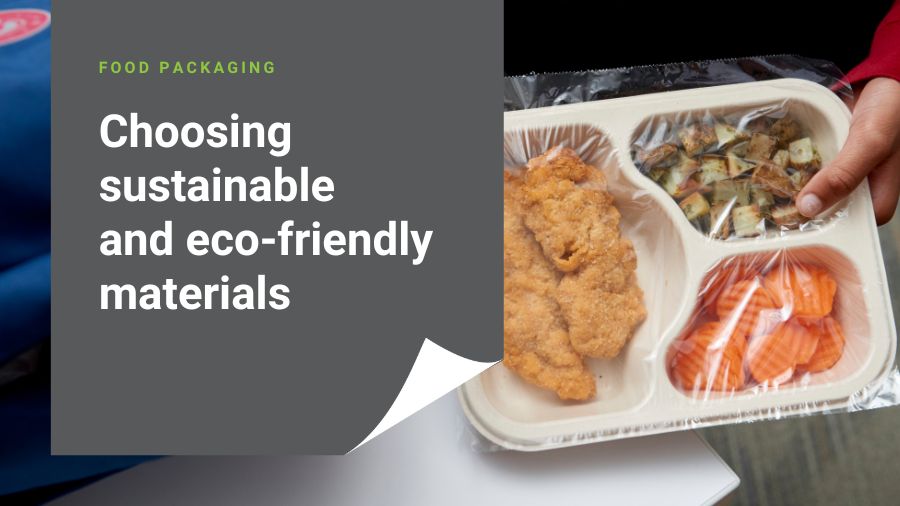As environmental awareness grows, so does the importance of choosing sustainable materials for food packaging. Companies offering ready-to-serve meals are increasingly turning to eco-friendly packaging solutions.
Bamboo and sugarcane, derived from sugar cane, stand out among sustainable materials due to their environmentally friendly life cycle and ecological qualities. This article explores the journey of these materials, from their origin to their transformation into meal trays, while highlighting their low environmental impact.
The life cycle of materials: From source to tray
Bamboo: a fast-growing, renewable resource
Bamboo is a remarkable plant due to its rapid growth, reaching up to one metre per day under optimal conditions. This ability to regenerate rapidly after harvesting, without the need for replanting, makes it an ideal renewable resource. The process of transforming bamboo into meal trays begins with the harvesting of bamboo stalks, which are then cut into thin fibres.
These fibres are processed into pulp through a grinding process, then washed, bleached and dried to produce bamboo sheets. These sheets are compressed under high pressure to form strong and durable containers. This process uses less water and energy than traditional plastic production, thereby reducing the overall carbon footprint of the final product.
Sugarcane: recycling agricultural by-products
Sugarcane is the fibrous residue left after extracting sugarcane juice during sugar production. This by-product, once considered waste, is now used to create sustainable meal packaging. The process begins with collecting sugarcane, which is then cleaned to remove any remaining sugar residues. The sugarcane is then mixed with water and other natural agents to form a pulp. This pulp is moulded into the desired shape, whether it’s trays, bowls or lids. The moulded products are then dried at high temperatures to ensure their strength and resistance to water and grease. This process is energy-efficient and allows for the reuse of an agricultural by-product, thus reducing waste and promoting a circular economy.
Ecological qualities of bamboo and sugarcane trays
Biodegradability: a natural return to the earth
Bamboo and sugarcane containers are distinguished by their ability to biodegrade naturally. Unlike plastics, which can take centuries to break down, bamboo and sugarcane decompose in just a few months under proper composting conditions. This biodegradability considerably reduces the amount of waste that ends up in landfills, thereby contributing to environmental protection.
From a scientific standpoint, this ability to decompose is due to the organic composition of these materials, primarily made up of cellulose. Microorganisms in the environment easily break down cellulose into carbon dioxide, water, and biomass without leaving any toxic residues, unlike plastics, which can release microplastics and other harmful substances.
Renewability: sustainable, abundant resources
Bamboo and sugarcane are among the fastest renewable plants on Earth. Bamboo, with its rapid growth and ability to regenerate without replanting, and sugarcane, which is an easily renewable annual crop, are sustainable choices for the production of packaging materials.
The use of these resources promotes sustainable agriculture and helps maintain the ecological balance of the regions where these plants are grown. Unlike non-renewable materials, these resources do not contribute to deforestation or the depletion of natural resources, making them an environmentally responsible choice.
Environmental impact: comparison with traditional materials
Compared to traditional packaging materials such as plastic or styrofoam, bamboo and sugarcane have a significantly lower environmental impact. The production of plastic requires considerable quantities of oil, water and energy and generates a substantial amount of greenhouse gases. Plastic waste is also one of the main sources of pollution, with devastating consequences for marine ecosystems.
In contrast, bamboo and sugarcane containers are made from renewable raw materials and require less energy. Their ability to biodegrade also means they do not contribute to long-term pollution. By adopting these materials, businesses can reduce their carbon footprint and contribute to the transition to a more sustainable economy.
Natural fibre represents the future of sustainable packaging materials in the foodservice industry. Their life cycle, from field to decomposition, is a model of sustainability that offers an ecological alternative to traditional plastics. By adopting these materials, businesses can not only reduce their environmental impact but also meet a growing demand for more planet-friendly packaging solutions.
If you’re considering switching to more sustainable packaging, explore bamboo and sugarcane options to see how they can meet your business’s specific needs. Contact us today to learn more. Our experts are ready to assist you in making the transition to a greener future.

